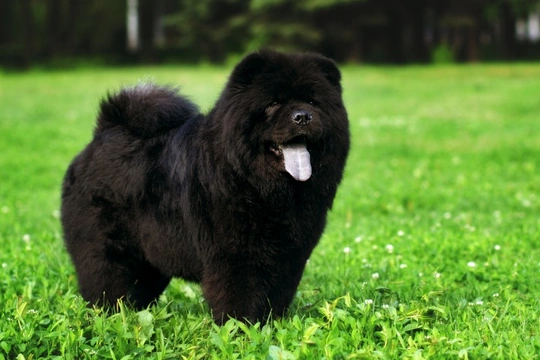
Colour Dilution Alopecia in Dogs
Colour dilution alopecia or CDA seems to affect certain breeds more than others which is particularly true of dogs with blue or fawn coloured coats. With this said, breeds with blue and red coats can also be affected by the condition with Dobermans being high on the list. Studies have established a link to colour dilution alopecia in other breeds that also suffer hair loss due to their coat colours.
Fortunately, it is a rare condition that’s seen in dogs where the storage and transfer of melanin is negatively impacted. Melanin is the pigment responsible for a dog’s skin and coat colour. As such, the condition is often referred to as Blue Mutant Alopecia and Blue Doberman Syndrome too.
Breeds Most at Risk
The breeds that appear to be the most affected by the condition include the following:
- Chow Chow
- Dachshund
- Doberman
- Whippet
- Italian Greyhound
- Standard Poodle
- Great Dane
- Irish Setter
- Yorkshire Terrier
- Miniature Schnauzer
However, as previously mentioned other dogs with blue or fawn colours in their coats are also at risk of developing the condition.
Symptoms to Watch Out For
Most dogs with the condition have normal coats when they are first born and the signs of there being something wrong do not usually start to appear until they are anything from four months to three years old. As they mature, dogs with the condition begin to show the following symptoms in their coats:
- Hair becomes brittle and breaks easily
- Bald patches start to appear in their coats which is often referred to as dogs having moth eaten"" coats with the areas most affected being a dog's head, ears and along the spine
- Wrinkled skin
- Allergic reactions
- Dermatitis
- Itchiness which causes dogs to constantly scratch at their coats causing more damage to their skin
- Secondary infection in hair follicles
- Dry, flaky and scaly looking skin
The only parts of a dog's coat that's affected by the condition are the blue areas while other parts remain perfectly normal. As the disorder progresses, a dog's skin becomes sore and inflamed which is not helped by them constantly scratching at affected areas.
Diagnosing the Condition
A vet would take into account a dog's breed and age in order to establish whether they are suffering from the condition. The vet would also need to have a dog's full medical history and ideally their lineage to determine whether there is a genetic link. As such, if a dog's parents or grandparents were known to suffer from the disorder, it puts their offspring at greater risk of inheriting the condition too.
The vet would carry out a full physical examination of a dog suspected of suffering from colour mutant alopecia and would typically recommend carrying out the following tests to confirm their diagnosis:
- Skin and follicle biopsies
Managing the Condition
Unfortunately, colour mutant alopecia is incurable, but the good news is that with the correct treatment, a dog's condition can be managed to alleviate the symptoms. There are some very effective medicated shampoos and other skin products specifically designed for use on dogs with skin disorders which are now available on the market. It's essential that a dog's coat and skin be kept as clean as possible when they have been diagnosed as suffering from the condition which is the first and most important part of managing their condition.
Even with the best treatment, because the disorder is irreversible, once dogs have lost any hair on their bodies, it will not grow back which in short means they often have a moth-eaten look about their coats for the remainder of their lives. It is also essential that their coats be closely monitored for bacterial infections and to treat any flare ups sooner rather than later to avoid things getting any worse and therefore more painful. Colour mutant alopecia is a frustrating skin disorder when it comes to managing and treating, but thankfully it’s a relatively rare canine skin disorder.
""



